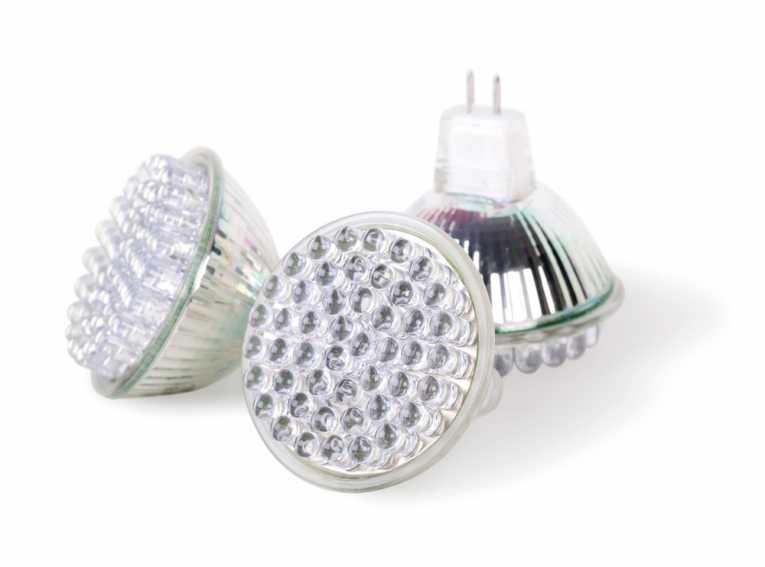The light-emitting diode (LED) is not a new invention. First created in 1927, they have slowly become an integral part of our daily lives. The price of the semiconductors involved in their manufacture delayed this process and it wasn't until the 70's that they became commercially viable for mass production. The iconic red displays of that era were seen in everything from watches to calculators.
As a method of displaying alphanumeric information they served their purpose but they couldn't compete with incandescent or fluorescent bulbs for lighting. Over the last ten years the technology has advanced in leaps and bounds, moving from the limited red diodes to white and blue diodes that are able to produce light at excellent efficiency levels. Commercial LED lights have reached real-world efficiency levels of approximately 46 lumens per Watt compared to 17.5 lumens per Watt for a normal incandescent bulb, 24 for a halogen bulb, or 50 - 70 for a compact fluorescent lamp (CFL).
Due to the maturity of this technology, environmental groups around the world now recommend the replacement of incandescent light sources with LEDs or CFLs but deciding which technology to use is not so simple. A survey by the Energy Saving Trust, a British non-profit organisation, may help to push future purchasers towards LED solutions.
Their study looked at thousands of light fittings, measuring energy use, durability, light levels and colour temperature. Changing light sources from incandescent to LED had positive results in every aspect. In the first phase of the study alone they managed to save 2 million kWh per year and over the duration of the completed study they had saved enough energy to light almost 6,000 households.
The colour temperature changed from the yellowy white (3300K) of traditional lighting to the cooler temperatures of LED (5000K). Daylight is usually approximately 6500K, demonstrating that the LEDs were producing a more 'natural' colour.
As the price of LED lamps decreases the initial outlay will not be seen as a barrier to this investment. As James Russil from the Energy Saving Trust pointed out, "The final issue to overcome in getting LED lighting in more buildings is cost. It's a fact of life that when technologies are new to market the cost tends to be quite high and reduce as they become more mass-market." As he also noted, this is happening as we speak and with a little more time it is likely that they will replace the old bulbs in our homes and businesses.










